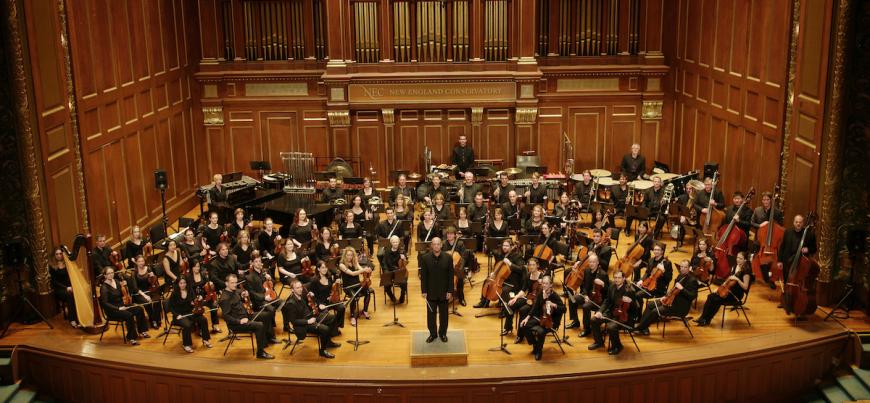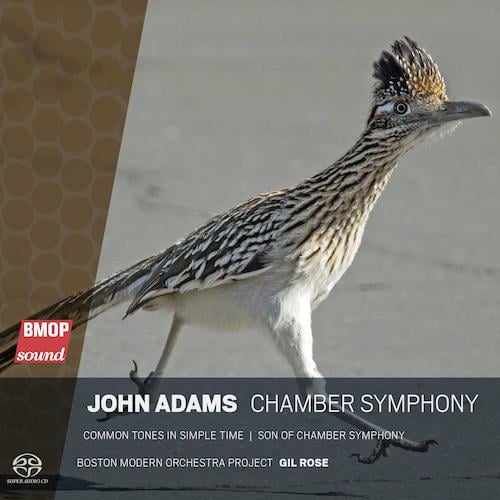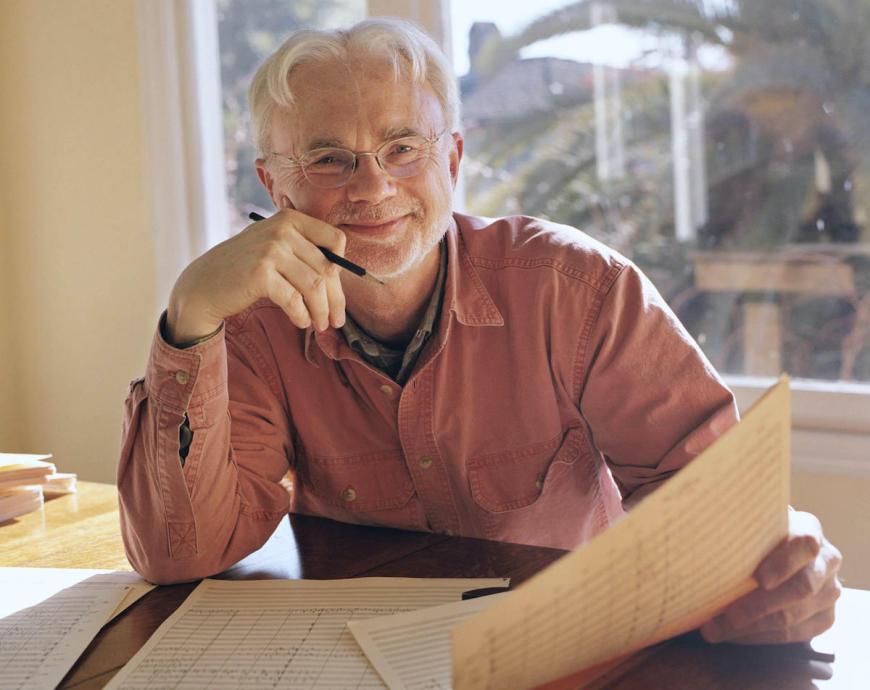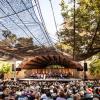
No, this is not a review of a new, expansive take on John Cage’s deafening masterpiece, 4’33”. That composition, the last I heard, seems to have eluded our own John Adams so far. Rather, it’s a bright welcome to John Adams: Chamber Symphony (BMOP Sound), the latest recording from Gil Rose’s astoundingly prolific Boston Modern Orchestra Project (BMOP). The recording, which is available in hybrid SACD and half-baked (24/44.1) hi-resolution download/streaming formats, surveys a good 28 years of Adams’s output in the form of his Chamber Symphony (1992), Common Tones in Simple Time (1979), and Son of Chamber Symphony (2007).

Chamber Symphony is one holy racket. Prepare, if prepare you can, for a rollicking jaunt through territory traversed by mongrels and, in the end, the classic cartoon character Road Runner. Adams, who at age 45 was most definitely in his energetic prime, was reveling in Arnold Schoenberg’s Chamber Symphony No. 1, Op. 9 (1906) and the interests of his son and future composer, Sam, when Schoenberg’s wild universe and the music of Sam’s TV cartoon universe melded together in a new three-movement work for 15 musicians. Beginning with the jarring whack of a cowbell, the piece is all over the place. Discordant and disruptive as it laughs in our faces, it has so many highlights, including a hilarious clarinet in its second movement and some syncopated action between what may be a bassoon and contrabassoon in the finale, that it’s impossible to grab on to just a few. The final “Roadrunner” movement, the shortest of the lot — here under six minutes — is as close to Barnum and Bailey as you can get in these post-Big Top days.
Is it even necessary to say that the recordings of both Chamber Symphony and its spin-off, captured in Fraser Hall at WGBH Studios in Boston back in August 2014 are pretty darn good? They’re not as airy and resonant as the recording of Common Tones in Simple Time, which was set down in Mechanics Hall in Worcester in March 2015, but they’re quite clear and colorful. And the extra resonance afforded to the recording’s earliest work serves its radiant mystical minimalism to a T.
Pigeonholing Common Tones in Simple Tone as “minimalist” fails to describe the uncommonly luminous glow with which it begins and ends. The music’s optimism is as far from the oft-depressive, dreary repetition of Philip Glass as you can get. Although I wish that BMOP would have recorded it with a higher sampling rate, which would have moved their sound closer to analog and added a lot of width and depth, the soundstage of Common Tones in Simple Time is still wide enough to begin to provide an immersive experience to those whose audio equipment allows. This is a gorgeous 21:21 immersive journey into outer space, and one I expect to return to many times.
Son of Chamber Symphony has its own share of fun, including what sounds like a honking horn in the opening movement, but it’s a far more mature, grounded, and toned-down work than its antic-filled predecessor. Adams seems less concerned with knocking us over than gifting us with joy and beauty. That the final movement was used in Mark Morris’s ballet Joyride is anything but an accident.
This is an hour of music by one of the greatest composers of our age — a man who combines East Coast sophistication with the Final Frontier adventurism of California-land. Those who think that tripping reached its heyday in the age of Jefferson Airplane and The Beatles’ Magical Mystery Tour owe it to themselves to drop into Adams’s universe once again.





